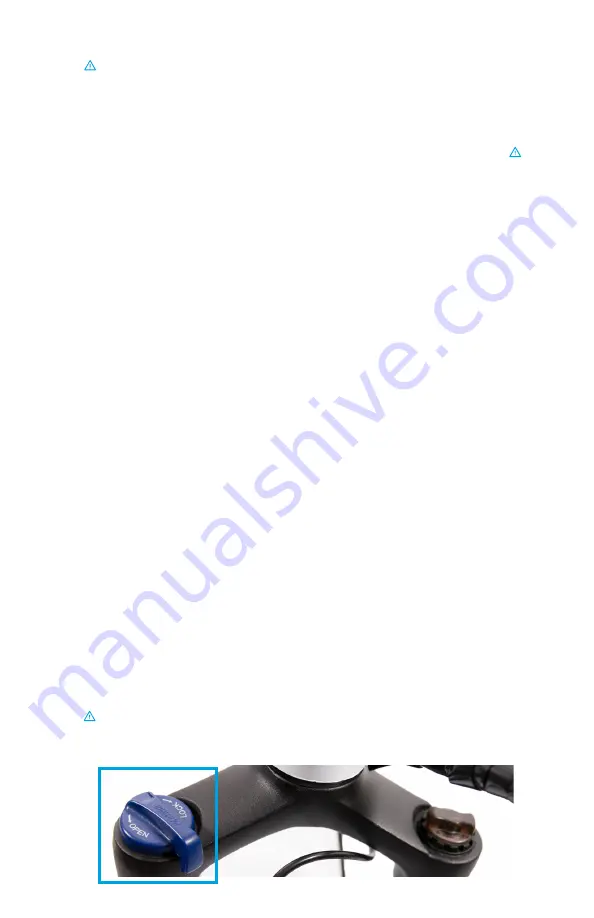
11
UNBOXING
PREPARING TO RIDE
•
Ensure all components are properly secured before riding
otherwise serious harm or death could occur
. All components should
be torqued to the torque specified in the Recommended Torque
Values section of this manual. Refer to the table of contents at the
beginning of this manual for the page number of this section.
This
includes but is not limited to: pedals, handlebars, handlebar clamp,
cranks, seat, and seatpost clamp.
• Make sure you can’t twist the seat or stem out of alignment by hand.
• Check to see if your saddle is positioned at the proper height. Sit on
the saddle facing forward and place the ball of your foot on the pedal
at its lowest point. Your leg should be mostly straight at this point
with a slight bend at the knee. You should be able to pedal the bike
without overextending your leg when the pedal is at its lowest point.
Your legs may be overextended if it causes your hips to move side
to side, which means the seat must be lowered. To start, adjust the
saddle so your feet can still be placed firmly on the ground.
• Check that your suspension fork is properly adjusted for the terrain
and your weight. The suspension fork will affect the handling of
the bike, primarily when going over bumps and stopping. In some
situations, it may be advantageous to lock out the suspension so it is
fully rigid.
• The suspension fork can be locked out so it is rigid, and the tension
is adjustable. To adjust the suspension fork use the blue knob. To
fully lock the suspension, turn the knob clockwise towards the “lock”
direction indicated until it cannot be
turned further.
• To increase the stiffness, turn the knob clockwise towards the “lock”
direction indicated. To make the suspension softer, turn the knob
counterclockwise towards the “open” direction indicated.
•
If you are over 265 lbs you should lock out the suspension fork
before riding.


























